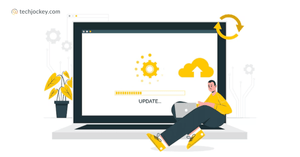Best Patch Software
(Showing 1 - 19 of 19 products)

ManageEngine Patch Manager Plus
Brand: Zoho Corporation
(0 user reviews)
ManageEngine Patch Manager Plus is a complete Password Management Software designed to serve Startups, SMBs, SMEs and Agencies. This Password Management So... Read More About ManageEngine Patch Manager Plus
Price On Request

Motadata ServiceOps Patch Manager
Brand: Mindarray Systems
(0 user reviews)
Motadata ServiceOps Patch Management System efficiently secures your network by automating patch deployment, minimizing vulnerabilities, and ensuring up-to... Read More About Motadata ServiceOps Patch Manager
Price On Request

Ninite Pro
Brand: Ninite
(0 user reviews)
A powerful tool that simplifies software deployment and management for businesses of all sizes.... Read More About Ninite Pro
Price On Request

Heimdal Patch and Asset Management
Brand: Heimdal Security
(0 user reviews)
Heimdal Patch and Asset Management Software streamlines IT operations with automated patch deployment, comprehensive asset inventory, and real-time monitor... Read More About Heimdal Patch and Asset Management
Price On Request

ITarian
Brand: ITarian
(0 user reviews)
ITarian Patch Software streamlines and automates the patch management process, ensuring timely updates and fixes for software vulnerabilities.... Read More About ITarian
Price On Request

Pdq Deploy
Brand: PDQ.com
(0 user reviews)
Pdq Deploy Patch Software empowers IT teams with seamless and centralized software patch deployment, ensuring enhanced network security and performance wit... Read More About Pdq Deploy
$1,500 /Year

SuperOps ai
Brand: SuperOps ai
(0 user reviews)
SuperOps.ai's Remote Monitoring Maintenance Solution empowers businesses with real-time system oversight and automated issue resolution, ensuring uninterru... Read More About SuperOps ai
$49 /month

Motadata ServiceOps
Brand: Mindarray Systems
(0 user reviews)
Motadata ServiceOps is an AI-powered ITSM software that helps in addressing IT services, asset management, and patch management.... Read More About Motadata ServiceOps
Price On Request

Hexnode
Brand: Mitsogo
Hexnode is a Unified Endpoint Management (UEM) that protects corporate data while preserving employee privacy.... Read More About Hexnode
Price On Request

NinjaOne
Brand: NinjaOne
NinjaOne Remote Monitoring Maintenance Software empowers businesses with seamless remote monitoring capabilities, predictive maintenance alerts, and compre... Read More About NinjaOne
Price On Request

Syxsense
Brand: Syxsense
Syxsense Endpoint Security Software offers comprehensive protection through advanced threat detection and real-time patch management, ensuring proactive de... Read More About Syxsense
Price On Request

Atera RMM
Brand: Atera Networks
(0 user reviews)
Atera Remote Monitoring Maintenance Software empowers IT professionals with robust remote monitoring capabilities, automated patch management, and an integ... Read More About Atera RMM
$149 /Month

Automox
Brand: Automox
(0 user reviews)
Automox Endpoint Security Software empowers IT teams with centralized control, automating patch management, configuration, and protection across diverse de... Read More About Automox
Price On Request

Rudder
Brand: Rudder (Normation)
(0 user reviews)
Rudder is a Continuous Configuration & Auditing software designed for automated Infrastructure management. It helps measure and correct configuration d... Read More About Rudder
€50 /Year

Price On Request

Naverisk
Brand: Naverisk
(0 user reviews)
Naverisk Remote Monitoring Maintenance Software empowers businesses with comprehensive remote monitoring and management capabilities, offering proactive al... Read More About Naverisk
Price On Request

GFI LanGuard
Brand: GFI Software
GFI LanGuard Network Security Software empowers businesses to fortify their network defenses through comprehensive vulnerability scanning, automated patch... Read More About GFI LanGuard
Price On Request

Connectwise Automate
Brand: ConnectWise
(0 user reviews)
ConnectWise Automate Remote Monitoring Maintenance Software empowers IT teams with comprehensive remote monitoring and management capabilities, allowing th... Read More About Connectwise Automate
Price On Request
Last Updated on : 05 Jan, 2026
Patch Software Comparison










